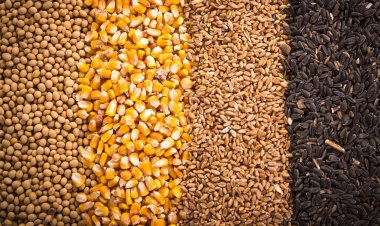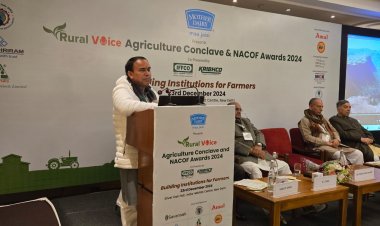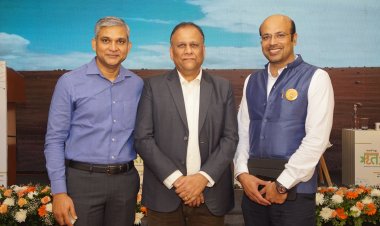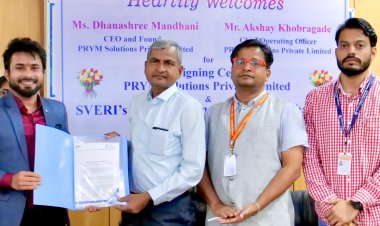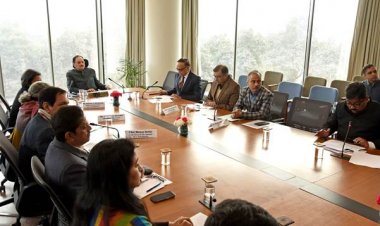Conservation of plant genetic resources shared responsibility of humanity: Agriculture Minister Tomar at GB9 of ITPGRFA
Tomar said that the aim of the Plant Treaty was to recognize the contribution of farmers and local communities to the diversity of crops. Over the centuries, tribal and traditional farming communities have continuously shaped and adapted the dimensions of the rich genetic material they have. This has given rise to vast and diverse cultural, culinary and curative practices.

New Delhi
Union Minister of Agriculture and Farmers Welfare Narendra Singh Tomar has said that plant genetic resources are the source of solution to the breeding challenges. Plant genetic resources are also vulnerable due to habitat destruction and climate change. Their protection is a "shared responsibility of humanity". “We must use all modern technologies as well as traditional knowledge to preserve and use them in a sustainable manner.”
Tomar said this while inaugurating the Ninth Session of the Governing Body (GB9) of the International Treaty on Plant Genetic Resources for Food and Agriculture (ITPGRFA) in New Delhi on September 19.
In the inaugural session, Tomar said that the aim of the Plant Treaty was to recognize the contribution of farmers and local communities to the diversity of crops. Over the centuries, tribal and traditional farming communities have continuously shaped and adapted the dimensions of the rich genetic material they have. This has given rise to vast and diverse cultural (life and commerce around plant diversity), culinary (incredible variety, tastes and nutrition as per purpose and season) and curative (food as medicine) practices.
Tomar said that the COVID pandemic had taught us some lessons. Availability and access to food are paramount to peace and stability. India remains committed to ensuring food and nutritional security for its citizens. Tomar said that we needed to ensure bountiful crop production year after year. The answer is crop diversity and diversification.
Emphasizing the timely conservation and use of wild species of crops as well as potentially underutilized crops, Tomar said that our struggle for climate-resilient agriculture and nutritional security depended heavily on our decisions and actions. He said that genetic information obtained using advanced genomic and bioinformatic tools had the potential to become the subject of IPR. On the other hand, traditional knowledge that has been preserved and enriched from generation to generation becomes common knowledge. Multilateral forums such as the ITPGRFA are responsible for balancing commercial interests and heritage values to ensure the continuity of PGR conservation on earth.
Tomar said that India had been a firm advocate of sharing the wealth of plant genetic resources. A look at the IARC gene bank and other national gene banks shows that about 10 per cent of the germplasm is of Indian origin. Our vision is very clear that the genetic resources of plants should be made available for research and sustainable use.
We cannot ignore the contribution of farmers, indigenous communities, tribal populations and especially the women of the community in the conservation and selection of plant genetic resources over time, Tomar said. Therefore, we have a duty to keep their interests in mind while considering amendments and improvements to the Treaty. Article 9 of the ITPGFRA deals with the rights of farmers, which India is fully compliant with and relevant provisions are contained in the PPV&FR Act, 2001. 166 farmers/agriculture communities have been honoured with Plant Genome Saviour Awards. India proposes to the Governing Body of ITPGRFA to consider putting into action a module of Awareness, Outreach and Capacity Building Programme related to Farmers’ Rights, for which India will support its implementation.
Tomar said that global agricultural research was focusing on a few key crops for obvious reasons. Focusing on minor millets, minor pulses, minor fruits and leafy vegetables, he said that the Indian Council of Agricultural Research (ICAR) had a network of institutions working on these crops.
Welcoming all the dignitaries, Manoj Ahuja, Secretary, Department of Agriculture & Farmers Welfare, briefly elaborated on the strength of Indian agriculture and the significant progress made in the recent past due to progressive policies of the government. He urged that deliberations during the GB9 must lead to a balance between genetic resources governance with use, investment with innovation and access with benefit sharing to achieve future-ready solutions for agriculture and food security.
Yasmina El-Bahloul, Chairperson of the GB9 Bureau, welcomed all the delegates on behalf of the Treaty Bureau and thanked the Indian government for the warm hospitality and extraordinary arrangement for hosting the GB9.
Dr Dongou Qu, Director General, FAO, joined the session virtually. While thanking the Government of India for hosting the GB9 of the ITPGRFA, he said that the Plant Treaty was universal and that PGRFA needed sharing and caring for food security. These resources are important for agricultural resilience, especially in changing climates.
Shombi Sharp, UN Resident Coordinator, India, expressed happiness that the UN was associated with the very important Treaty. He called for global solutions to global problems, especially since PGRFA played a significant role in safeguarding agricultural production crops and thereby the farming community.
Dr Himanshu Pathak, Secretary, Department of Agricultural Research and Education (DARE) and Director General (DG), ICAR, emphasized the role of Research & Development (R&D) institutions as well as well-trained human resources for effective management of PGRFA. He informed delegates about the excellent capacity of ICAR along with State Agricultural Universities (SAUs) for germplasm management and use. He offered interested nations to enhance the utilization of gene pool through capacity-building programmes by India in gene banking and in trait-specific evaluation.



 Join the RuralVoice whatsapp group
Join the RuralVoice whatsapp group


















